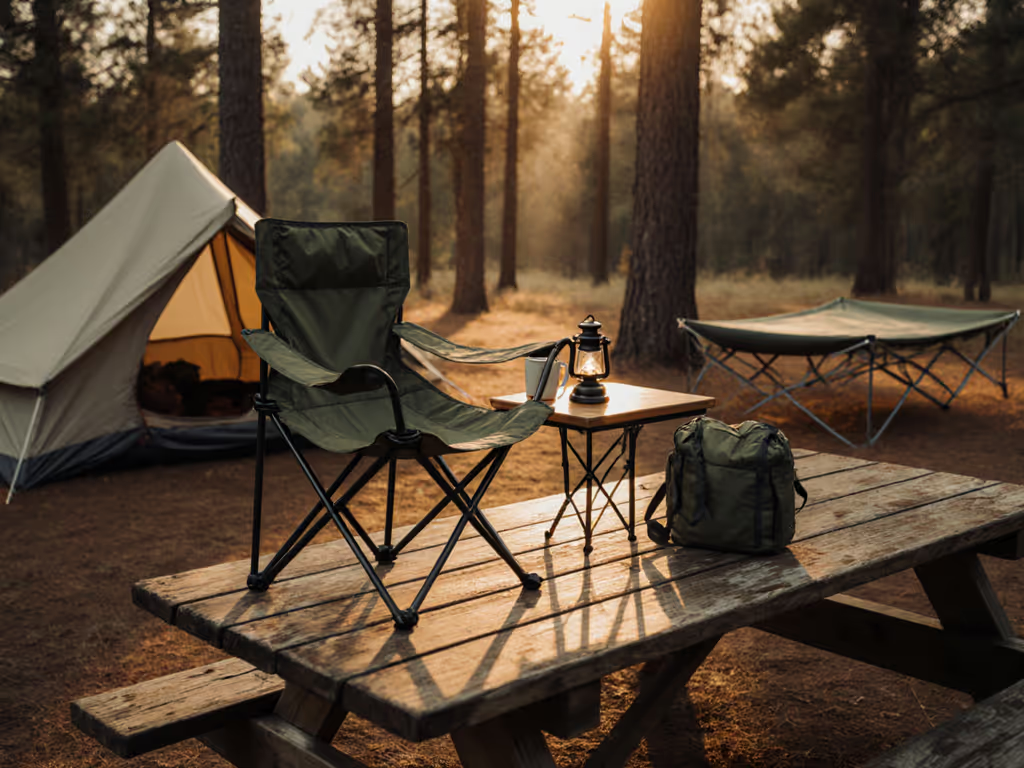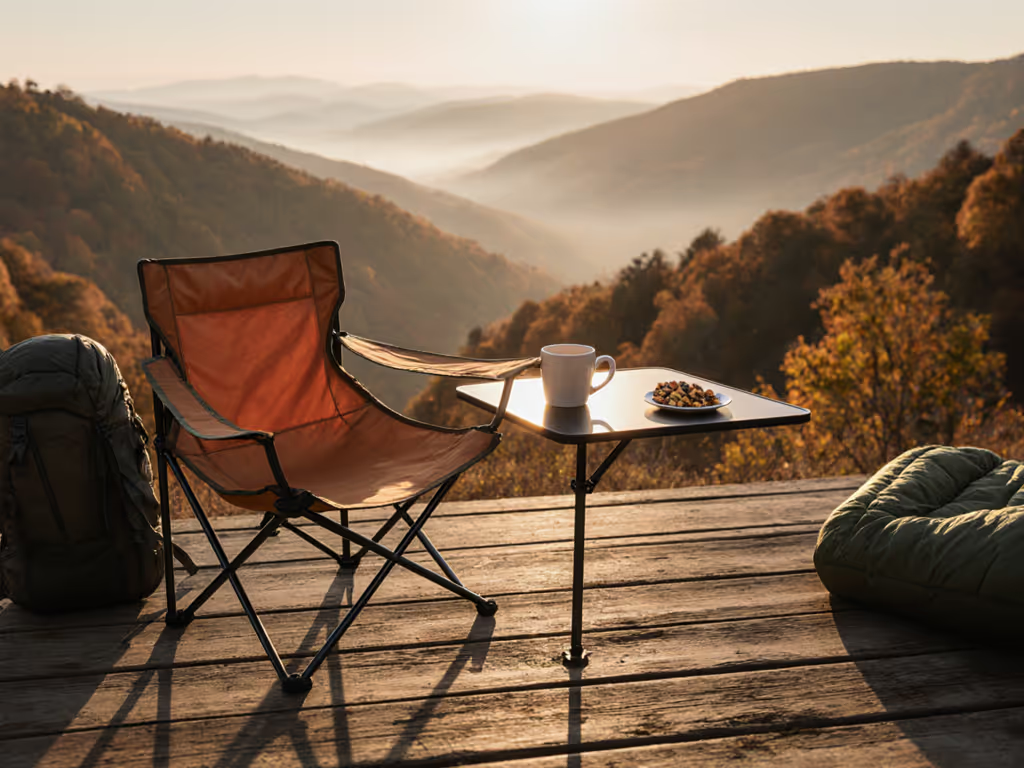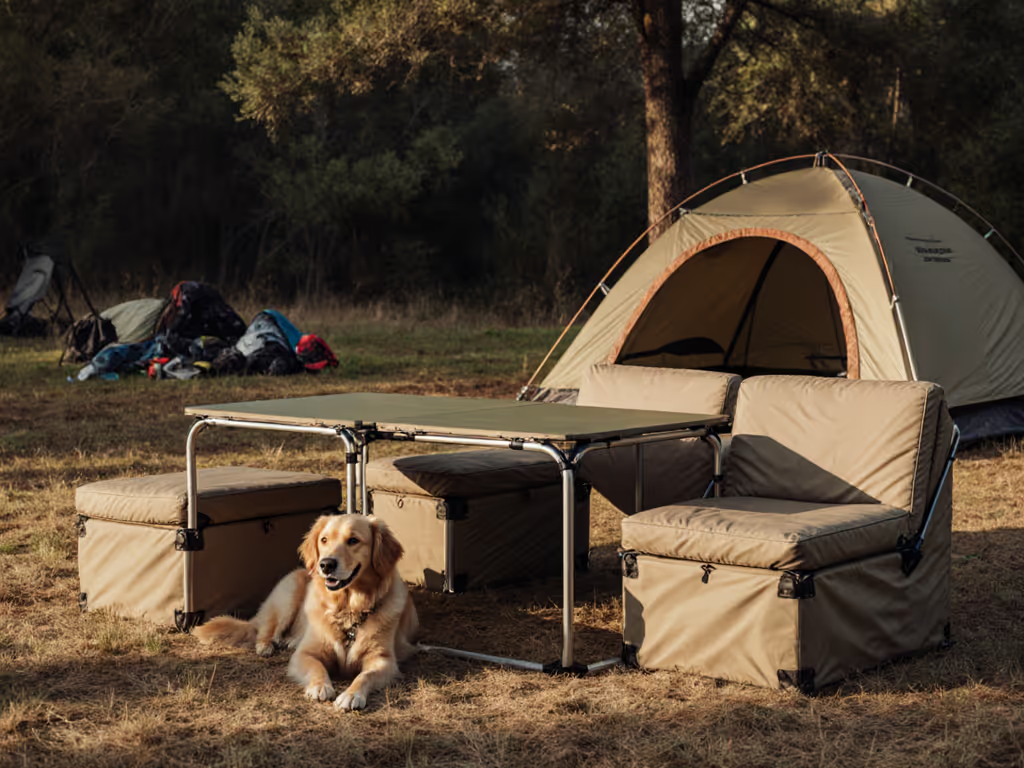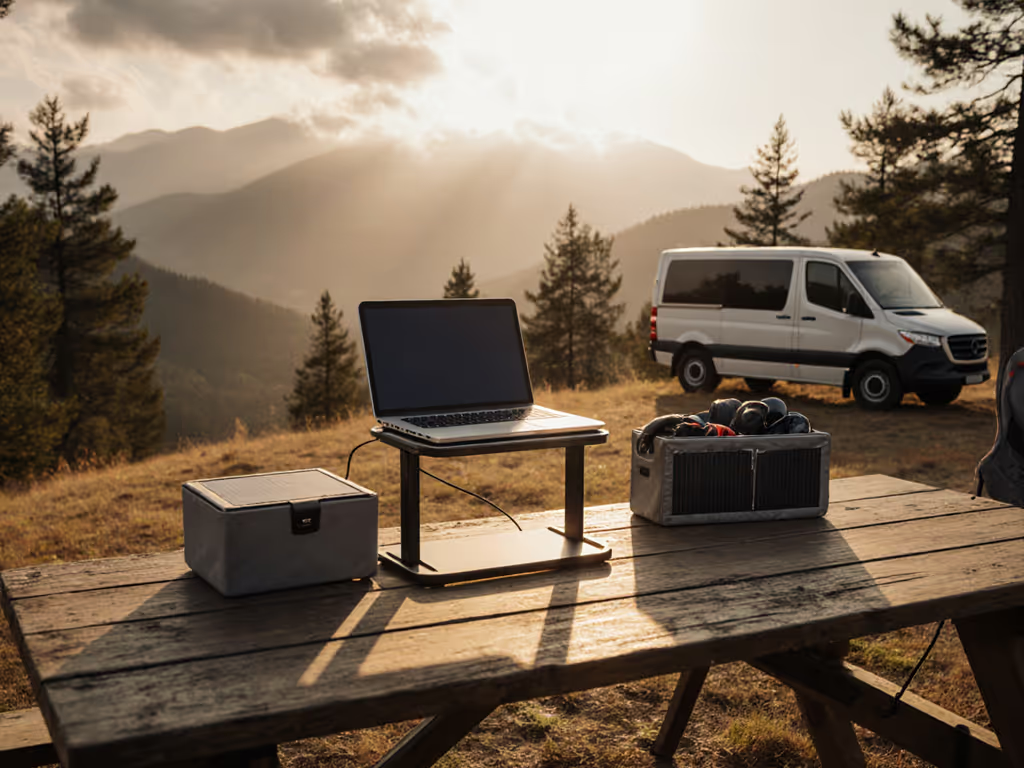DIY Ergonomic Car Camping Accessories and Upgrades: The Complete Stability & Comfort Checklist
DIY Ergonomic Car Camping Accessories and Upgrades: The Complete Stability & Comfort Checklist
You do not need a van build or a high-end rig to sleep well, dine comfortably, and feel supported at camp; you just need the right ergonomic car camping accessories and upgrades aligned to your body and your vehicle. When chairs, tables, cots, and organizers work in concert, everything feels easier, from chopping onions to changing into waders. Yet many campers still tolerate wobbly tables and knee-bumping setups because their furniture was bought piecemeal without attention to measurements. Camper Loadouts steps in with data-driven matches and practical guidance so your gear forms a cohesive, modular system rather than a random pile. As you read, you will learn how to pick, pair, and tune the essentials, and you will leave with a stability and comfort checklist you can apply on your next trip.
Why Ergonomics Matter at Camp: Comfort You Can Measure
Ergonomics at camp is not a luxury; it is injury prevention and energy management in the wild. Outdoor recreation research has long linked poor seating angles to back strain and shortened outings, and consumer surveys in 2024 showed that more than one in three car campers reported discomfort from mismatched chair-table heights. If your elbows float while cutting vegetables or your knees jam under the table, your body compensates by hunching and twisting, which quietly drains energy you want for hiking, paddling, or fishing. A few millimeters of adjustment can flip that script, because the human body prefers neutral joints: feet flat, knees near ninety degrees, elbows just below tabletop, and a spine supported at the low back. For deeper guidance on seat angles and posture, see our camp chair geometry guide. Camper Loadouts quantifies those targets and translates them into chair seat height, table height, and knee clearance figures that align with your stature and flooring surface. When the numbers are right, you immediately feel more grounded, tasks get safer, and meals stretch into conversations rather than rushed bites over a sliding plate.
Ergonomic Car Camping Accessories and Upgrades: Smart Pairings and Pro Picks
Pairing is the secret to comfort: instead of chasing “best of” lists, match the geometry and function of each piece so the whole is greater than the parts. Start with chair-and-table synergy, because that governs posture for cooking, eating, cards, and map planning; a chair’s seat height, back angle, and armrest profile should complement a table’s height, usable depth, and stability on your surface. Next, layer a cot or sleeping platform that preserves spinal neutrality with the thickness of your pad, then place organizers within arm’s reach to minimize twisting under load. Camper Loadouts specializes in these matches, offering chair and table pairing guides, comparative analyses, and campsite setup strategies that speak to how you actually camp. To see how combinations come together, consider the categories many people overlook: foot type for sand vs rock, table cross-brace placement for knee room, and pack volume so your kit fits without stress. With a few well-chosen ergonomic car camping accessories and upgrades, you create a calm, stable micro-cabin that assembles fast and packs small.
Watch This Helpful Video
To help you better understand ergonomic car camping accessories and upgrades, we've included this informative video from Justin Outdoors. It provides valuable insights and visual demonstrations that complement the written content.
- Prioritize seat-to-table geometry before aesthetics; function sets the tone for the whole campsite.
- Choose dual-height or shim-friendly tables to adapt to gravel, grass, or sand without rocking.
- Select chairs with real lumbar support or add a strap-on support to convert sling backs.
- Use collapsible bins as side tables at matching heights to reduce clutter and reach distance.
Seat-to-Table Geometry: Measurements That Matter
Great camp posture follows simple dimensions you can measure at home in minutes. Sit in a chair you like with hiking boots on, then measure seat height (floor to top of seat), elbow height when your upper arm hangs relaxed, and knee clearance needed to swing your legs. Most people thrive when table height hovers 2 to 4 centimeters below elbow height for dining and 0 to 2 centimeters above for chopping, with at least 18 centimeters of knee clearance from the underside. Camper Loadouts uses these body inputs to recommend compatible furniture and to flag conflicts like cross-braces that collide with your kneecaps. Because ground surfaces vary, we also account for sink and tilt, which is why adjustable feet and simple shims can be the unsung heroes. For table-specific height fit strategies and feature picks, explore our ergonomic camping tables guide. Use the table below as a starting point, then fine-tune with your actual boots, pad thickness, and surface.
Recommended Seat and Table Geometry (Adult Averages)
| Body Stature | Seat Height Target | Table Height for Dining | Table Height for Prep | Minimum Knee Clearance | Elbow-to-Table Offset |
|---|
| Short (150–165 cm) | 36–41 cm | 63–66 cm | 66–68 cm | 18–20 cm | -2 to -4 cm (table below elbow) |
| Average (166–180 cm) | 41–45 cm | 68–72 cm | 72–74 cm | 19–21 cm | -2 to -4 cm (dining), 0 to +2 cm (prep) |
| Tall (181–195 cm) | 45–49 cm | 72–76 cm | 76–78 cm | 20–22 cm | -3 to -5 cm (dining), 0 to +2 cm (prep) |
- Quick method: stand next to your table; the top should hit around your wrist crease for dining comfort.
- Check knee room by sliding a closed fist under the table edge while seated; if it barely fits, add clearance.
- Account for pads and thick-soled boots, which can raise you 2 to 4 centimeters at camp.
Stability Engineering in the Wild: Materials, Feet, and Center of Gravity
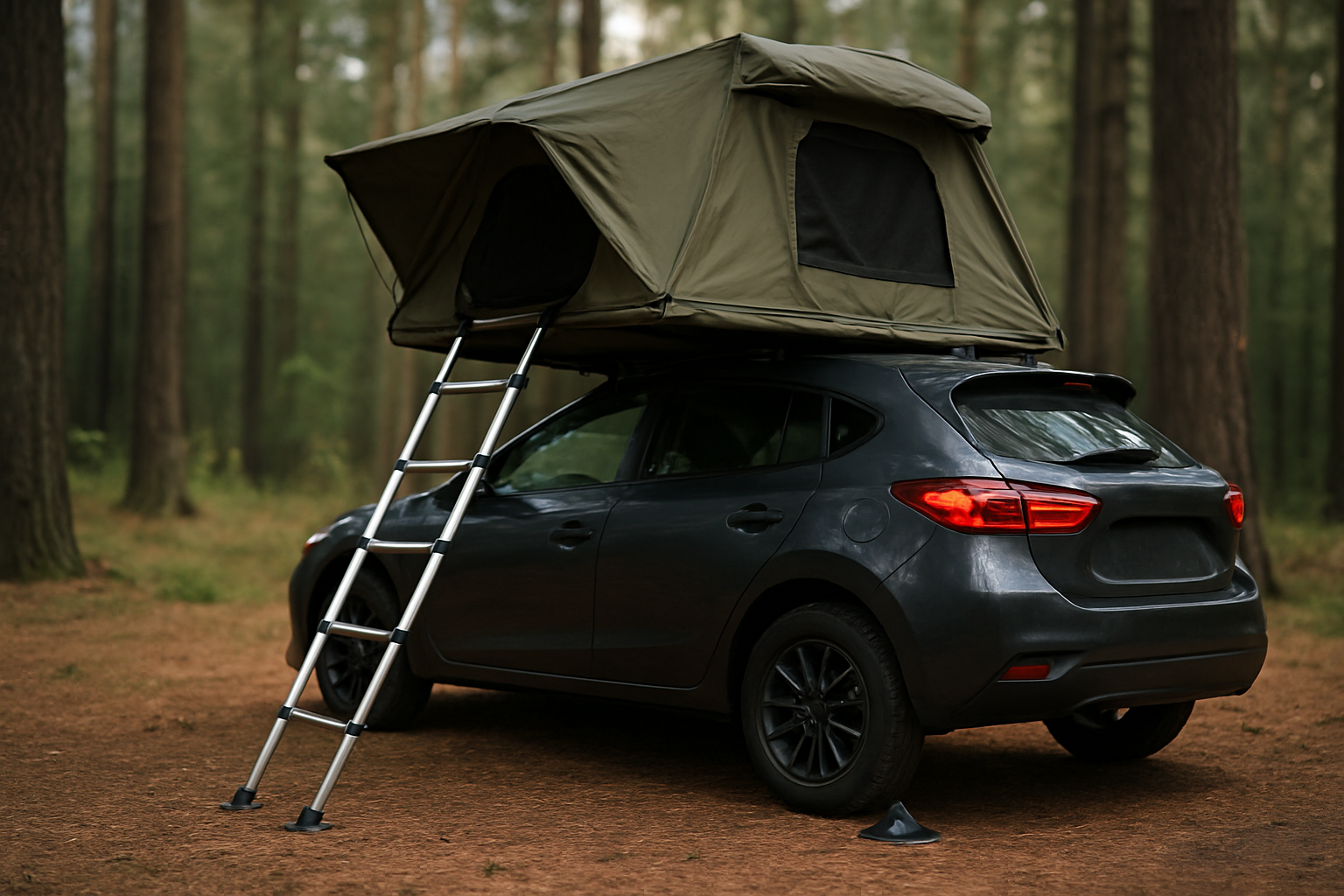
Stability is less about marketing terms and more about contact patch, leverage, and the center of gravity you create with your body and gear. On sand and loam, wide feet and lower seat heights resist sinking; on rock and concrete, grippy rubber feet and triangulated frames resist skittering and wobble. Tables fail when weight shifts beyond their footprint, so prioritize cross-braces high enough to preserve knee room while bracing lateral sway. See which models excel in our stability-tested folding tables comparison. According to field testing documented by multiple outdoor labs in 2023–2025, stability gains of 20 to 35 percent are common when switching from narrow-pegged legs to wider, articulated feet on uneven ground. Camper Loadouts bakes these factors into matching scores so your chair’s ground behavior complements your table’s; for instance, pairing a high center-of-gravity bar-height chair with a narrow, tall table is a recipe for teetering. Use this matrix to align choices with your terrain.
Stability Factors by Terrain
| Terrain | Best Chair Leg Type | Best Table Footing | Recommended Seat Height | Notes |
|---|
| Sand/Dunes | Wide splayed legs with sand pads | Disc feet or broad caps | Lower end of range | Increase contact area; consider ground cloth under feet. |
| Gravel/Forest Floor | Articulated feet with rubber | Adjustable telescoping legs | Mid range | Shim corners with wood offcuts or rocks for zero-rock. |
| Rock/Concrete | Non-slip rubber feet | Wide stance, cross-braced | Any, mind slope | Check slide resistance; add anti-slip pads under feet. |
- Keep heavy items low and centered; moving a cooler from tabletop to ground often halves wobble.
- Anchor tables with a discreet guyline to a stake or wheel if winds exceed forecast.
- Add 2 to 3 degrees of rearward chair recline at fireside to increase stability and comfort.
DIY [Do It Yourself] Upgrades That Change Everything
Small, reversible tweaks can transform ordinary furniture into a dialed ergonomic system without voiding warranties. A simple lumbar strap can convert a sling chair into a supportive seat: thread a 2.5-centimeter webbing strap around the backrest, add a micro-cam buckle, then cinch until your low back feels cradled at roughly the L4–L5 curve. To fix table wobble, pack four thin hardwood shims and two silicone anti-slip pads; place pads under the slipperiest feet and use shims to eliminate rock, then mark shim thicknesses so you can repeat the setup quickly. For surface height, cut a set of lightweight riser blocks from closed-cell foam to add 2 to 3 centimeters under chair legs when a table runs tall. Camper Loadouts’ buying guides and practical tips show how to add clamp-on side shelves, utensil rails, and folding footrests that do not increase pack volume significantly. Try these steps on your driveway, and time yourself; many readers cut setup time by 30 percent after one dry run because they learned exactly how many adjustments and shims they needed for their preferred layout.
- Measure your elbow height with boots on; write the number on painter’s tape stuck to your table underside.
- Pre-pack a “stability pouch” with shims, pads, a mini level, and a 3-millimeter cord for gust anchors.
- Color-code chair legs and matching risers so you do not mix sizes in low light.
Pack Volume, Setup Time, and Modular Efficiency
An ergonomic camp that is miserable to pack is not ergonomic for your day; the system must also be space-smart and quick. Two numbers rule here: liters of pack volume and minutes to deploy, both measured honestly from a closed trunk to first bite or first sip. In trials by gear testers and clubs in 2024, setups that nested components and shared hardware shaved an average of six minutes off setup and saved 20 percent in trunk volume compared to random assortments. Camper Loadouts quantifies these metrics and flags friction points like cases that do not fit side by side or tables that require tools on every leg. The best results often come from well-planned, space-optimized layouts where the table acts as a staging surface for the rest of the furniture and the chair slips into a dead-space slot under the cot during travel. Use this comparison to see how a cohesive kit outperforms a mismatched one.
Example Loadouts: Geometry, Volume, and Time
| Loadout | Seat-to-Table Match Score | Pack Volume (L) | Setup Time (min) | Stability Notes |
|---|
| Mismatched Mix | 58/100 | 240 | 24 | High table, low chair; knee contact with cross-brace; frequent shim needs. |
| Camper Loadouts Pairing | 88/100 | 190 | 12 | Balanced heights; wide feet; anchor-ready; zero-wobble after one shim. |
| Angler-Focused Set | 92/100 | 210 | 14 | Rod-friendly armrests; quick-dry seat; side table for tackle within elbow reach. |
- Nest flat tables against bins; store chairs vertically to reclaim floor area for coolers.
- Prefer hardware that adjusts by hand; tools add time and tend to vanish in the dark.
- Use one multi-position table with accessory rails over two single-purpose surfaces.
Anglers’ Corner: Fishing-Specific Seating and Work Surfaces
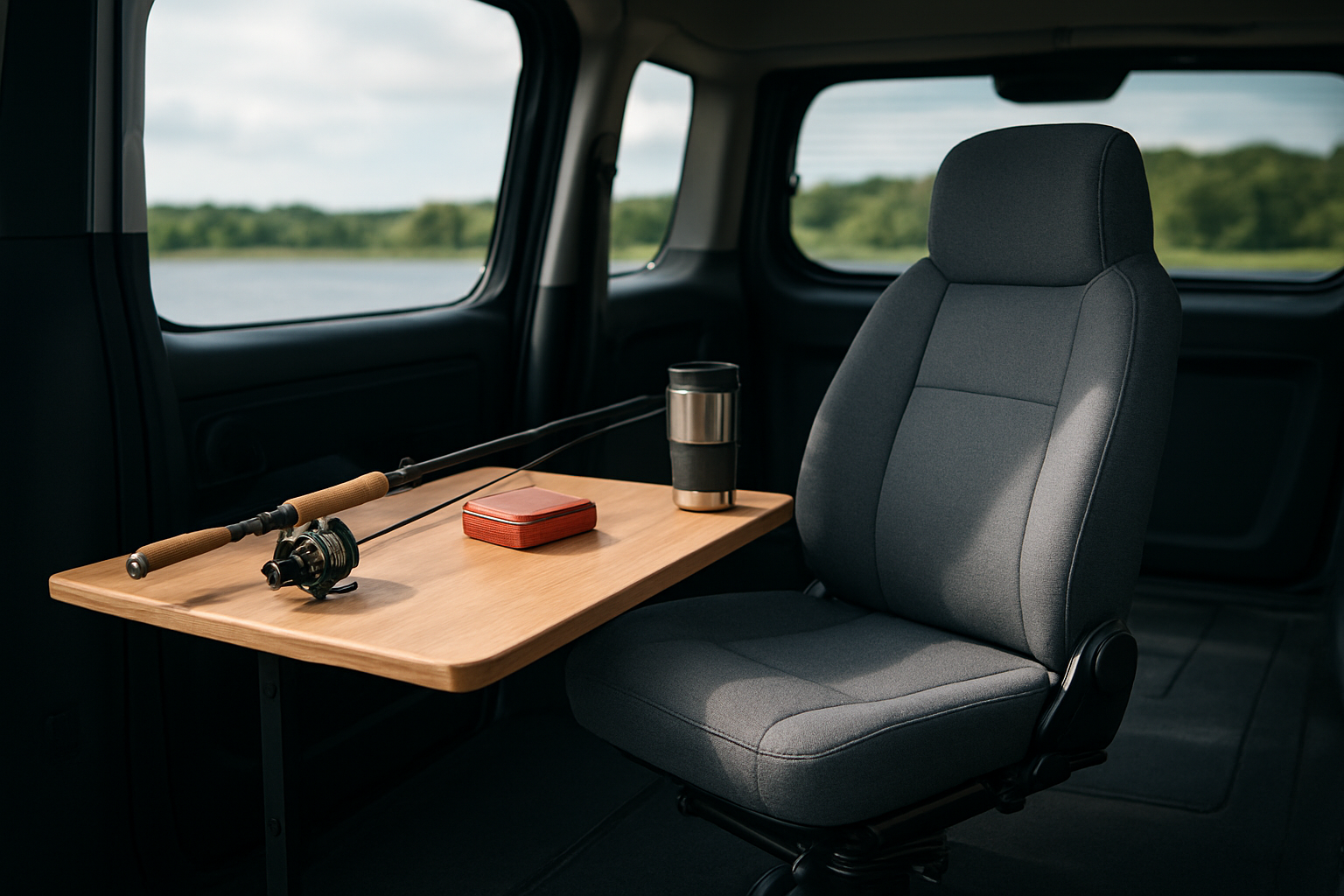
Fishing days reward thoughtful seating because you will alternate between perching to tie knots, organizing tackle, and relaxing between runs. Look for chairs with firm front edges that do not dig into thighs while leaning forward, and armrests that allow forearm support without blocking line work; a small clamp-on side platform at elbow height prevents hunching while you swap lures. Riversides are rarely flat, so favor wide, articulated feet and a lower center of gravity to avoid unexpected dips as gravel shifts; add a short anti-slip mat under each foot to resist micro-sliding on wet rock. Camper Loadouts includes comparative analyses and pairing guidance that consider anglers' needs, placing rod holders, side tables, and coolers within a 45-centimeter reach arc to minimize twisting. If you have ever watched a fly drift away because your chair rocked at the wrong moment, you will appreciate how a stable seat and a just-right side table can calm every move. With the measurements and modular thinking above, your fishing base becomes a quiet little workstation tuned to your body and the river’s mood.
Fishing Chair and Side-Table Considerations
| Feature | Why It Matters | Ideal Spec | Pairing Tip |
|---|
| Front Edge Firmness | Prevents thigh compression when leaning forward | Firm band or bar across seat | Match with slightly higher prep-height side table |
| Armrest Profile | Supports forearms, reduces wrist strain | Low, open ends | Ensure side table clears armrest tops by 2–3 cm |
| Foot Type | Maintains stability on wet rock or gravel | Articulated rubber with micro-lugs | Add anti-slip pads if slope exceeds 3 degrees |
Now that you have the measurement targets and the stability playbook, how do you choose actual products without guesswork? Camper Loadouts provides curated guides, reviews, and systems that focus on seat-to-table geometry, measured pack volume, setup time, and stability, so your kit clicks together like a travel puzzle. With chair and table pairing guides, space-optimized layouts, and practical tips, the company solves the classic pains of mismatched or uncomfortable furniture that cut meals short. Whether you are planning a glamping weekend, a long road loop, or an early-morning fishing session, the data and checklists below will keep every piece working harmoniously.
The Complete Stability and Comfort Checklist
Print this checklist and keep it in your camp kitchen bin, then run through it while setting up so you do not overlook the details that make the difference. If you have multiple users, note heights and preferences for each person and label gear accordingly; color tape on chair legs and corresponding risers is a great start. When you adjust in this order, you will stabilize the largest variables first, then fine-tune comfort at the end without backtracking. Over time, you will build a muscle memory for your camp that saves effort, prevents spills, and makes the whole experience feel smooth and intentional, just like a well-laid dining room where every seat and surface fits.
- Ground first: choose the flattest patch, brush debris, and orient with wind at table’s short side.
- Table next: level with adjustable legs, pads, and shims; verify knee clearance with the fist test.
- Chair match: set seat height with risers if needed; add lumbar strap; check elbow-to-table offset.
- Work triangle: place stove, prep area, and trash within two steps of your chair to reduce bending.
- Safety tie-ins: anchor table discreetly to a stake or vehicle; keep heavy coolers on the ground.
- Sleep system: align cot height with pad thickness for a neutral spine; store soft goods under cot.
- Pack-down plan: nest surfaces, coil guylines on a carabiner, and store shims in a labeled pouch.
Real-world example: a family of four used Camper Loadouts’ pairing guides to drop setup time from twenty-three minutes to eleven by switching to a dual-height table, adding two shim sets, and color-coding risers. They reported fewer spills, longer dinners, and a calmer evening rhythm because elbows rested at the right height and the table no longer chattered on gravel. In another case, two anglers rebuilt their riverside base around a lower chair with wide feet and a clamp-on side table at prep height, which reduced line tangles and made cold-morning knot ties steady. These are small changes, but with precise numbers and modular thinking, the campsite becomes a stable, ergonomic extension of your home.
Ready to plan your own combinations without trial and error? Camper Loadouts provides data-driven guides to match chairs, tables, cots, and organizers for optimal comfort, stability, and pack efficiency so your layout is cohesive. With comparative analyses, care and maintenance tips, and campsite setup strategies, you can tailor a kit for your body, crew, and terrain. Use the tables and checklist above as your baseline, then lean on the company’s measurements and pairing guides to lock in your ergonomic car camping accessories and upgrades.
Conclusion
A stable, ergonomic camp is the fastest way to turn every trip into relaxed meals, supported backs, and unrushed evenings.
Imagine pulling into any site and assembling a zero-wobble, just-right-height setup in minutes because every piece was chosen to work together. In the next 12 months, more campers will adopt data-led pairings as standard practice, just like checking weather or maps.
What would change about your time outside if your furniture finally fit you, your crew, and your terrain thanks to ergonomic car camping accessories and upgrades?
Additional Resources
Explore these authoritative resources to dive deeper into ergonomic car camping accessories and upgrades.
Pair Chairs And Tables With Camper Loadouts
Camper Loadouts delivers data-led chair and table pairing guides that match cots and organizers for comfort, stability, and pack efficiency for outdoor enthusiasts, glampers, car campers, anglers, and comfort seekers.
Get Pairing Guide
